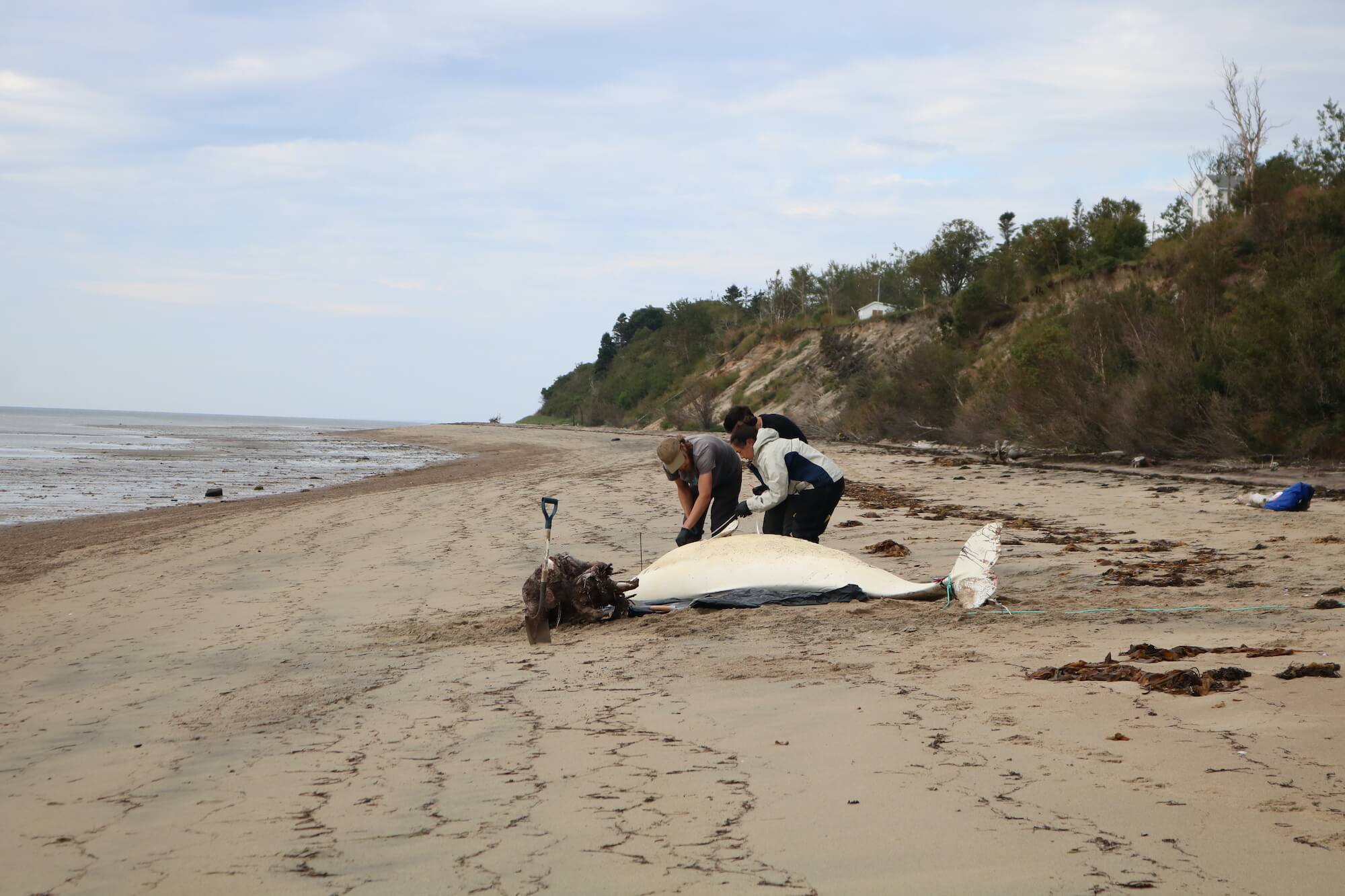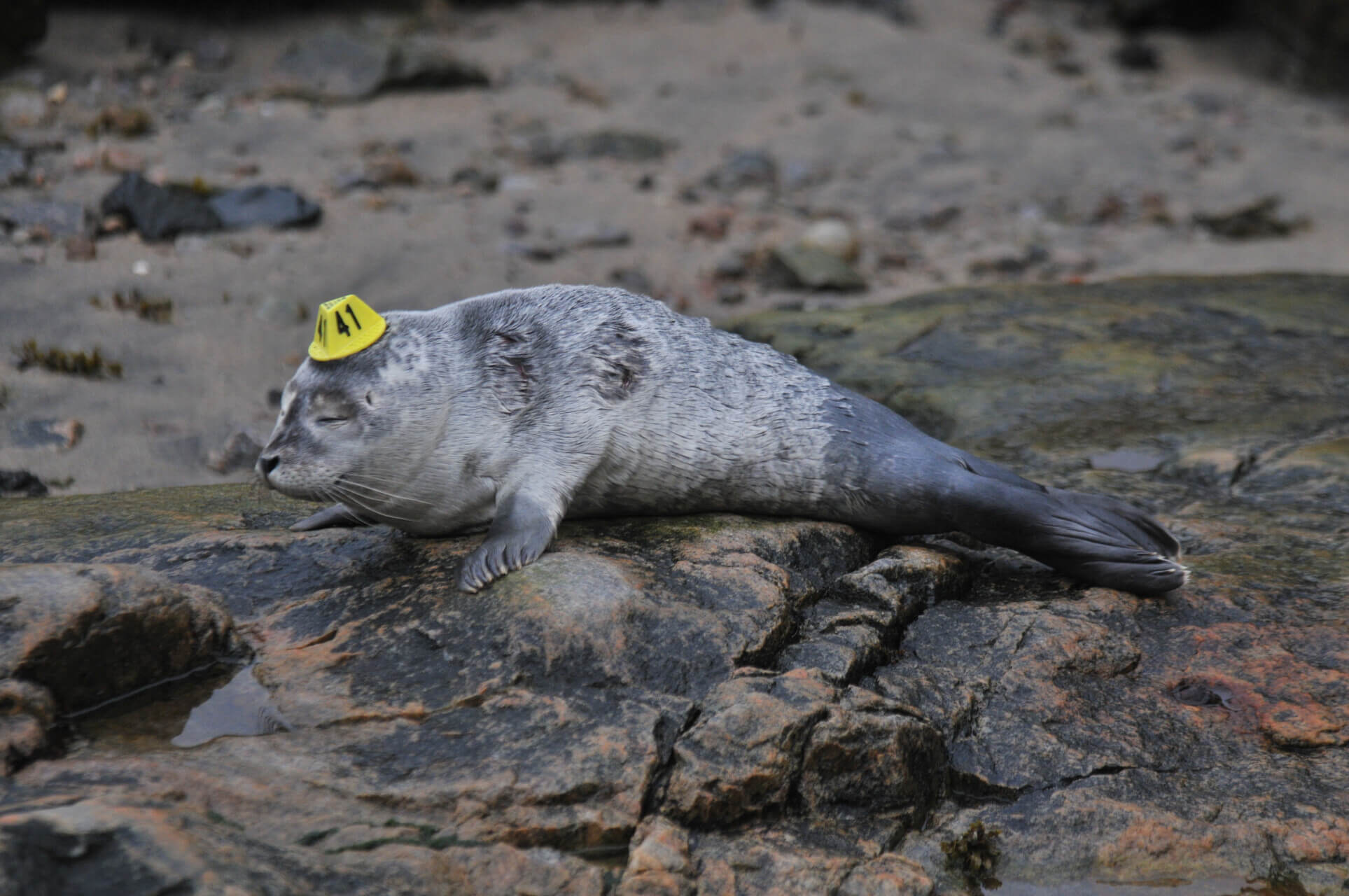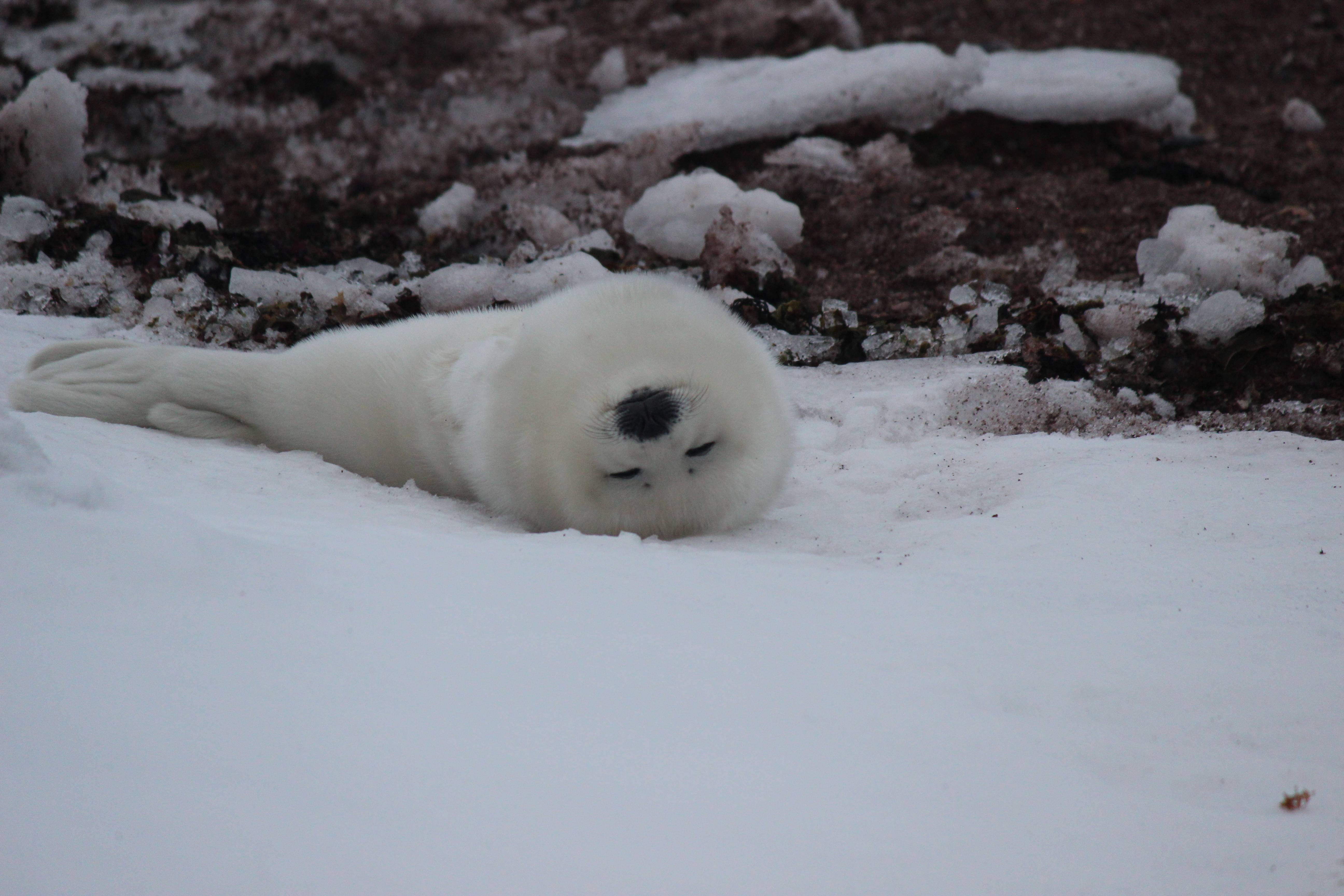On 29 May 2016, an article about a beluga carcasse found in Les Escoumins was published. The fresh carcass was transported to the Université de Montréal’s faculty of veterinary medicine (FMV) for a necropsy.
June 6, 2016 Update – Necropsy Results
The carcass underwent a necropsy on Monday, May 30 performed by the Université de Montréal’s FMV. The cause of mortality could not be determined. The well preserved young female was not carrying a fetus, but was lactating. It is quite possible that she gave birth last year. The beluga calving period runs from June through September and females nurse for 20 to 30 months.
Mortality of a Female Beluga – 29 May 2016
On Saturday afternoon a resident of Les Escoumins contacted the Quebec Marine Mammal Emergency Response Network (1-877-7baleine). A beluga carcass had washed up on shore the night before. According to the witness’ description, there was no doubt that this carcass was fresh enough to allow for a necropsy by the Université de Montréal’s faculty of veterinary medicine (FMV): no odour, skin mostly intact, eyes still present. After receiving photos taken by a Marine Mammal Emergencies volunteer, we noticed a grayish colouration on the animal’s neck. The beluga goes through different colour stages in its life: newborns have brown skin, then bluish-gray until they are about 2 years old; juveniles 2 years and up have gray skin until they reach adulthood. Adults fade to white between 8 and 12 years of age.

The 3.6 m long whale was secured in the morning so that it would not be washed away by the tide pending its transport to Saint-Hyacinthe for a comprehensive examination. The GREMM (Group for Research and Education on Marine Mammals, www.gremm.org) team took the opportunity in the afternoon to photograph the carcass with the aim of studying whether or not markings might help reveal the identity of the individual. In summer, this team photographs belugas in their natural habitat; every individual is unique. They bear natural markings, notches in their dorsal crest, deformities or scars. This is the principle behind the photo-identification project. This project helps track the movements, social organization and behaviour of whales and even add a page to these animals’ biographies when they are identified washed up on shore. Careful analysis of the photos will perhaps help put a name to this face.
The beluga left for the FMV on Sunday morning. The necropsy will be performed early in the evening. Veterinarian Stéphane Lair and team will be able to reveal the most likely causes of mortality. This was the third beluga carcass found in 2016.
Carcass recovery video (credit: Patrice Deschênes, Marine Mammal Emergencies volunteer)





